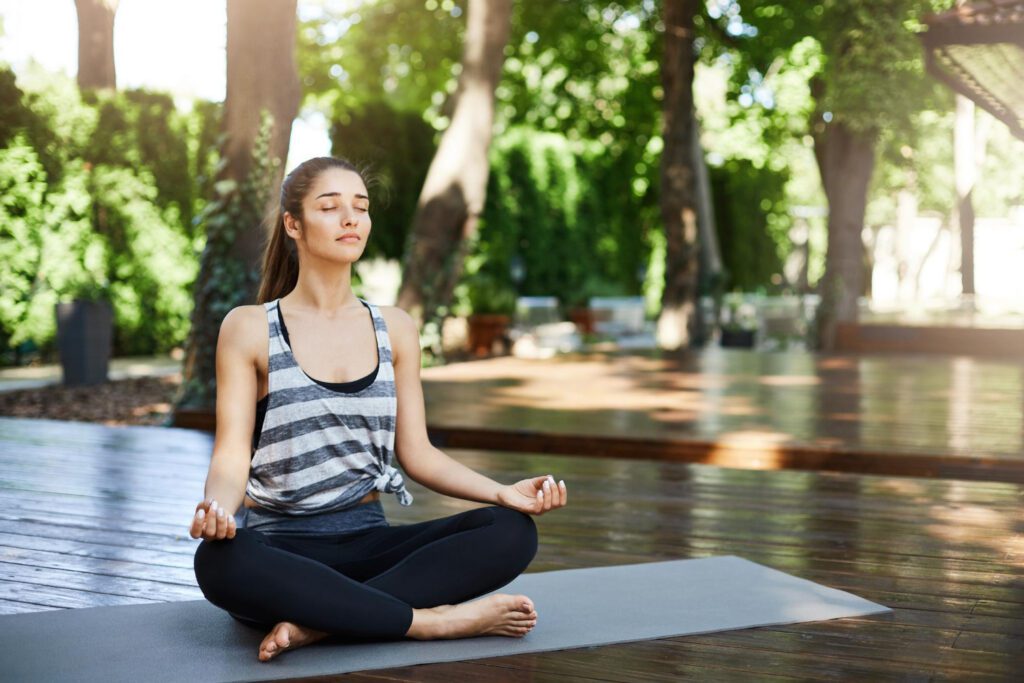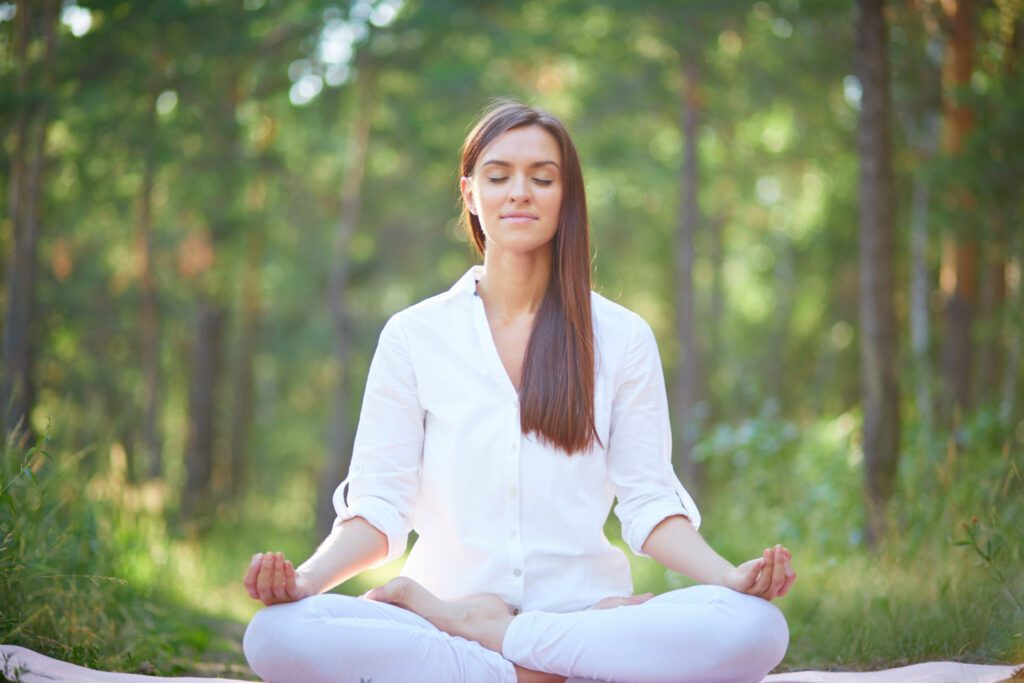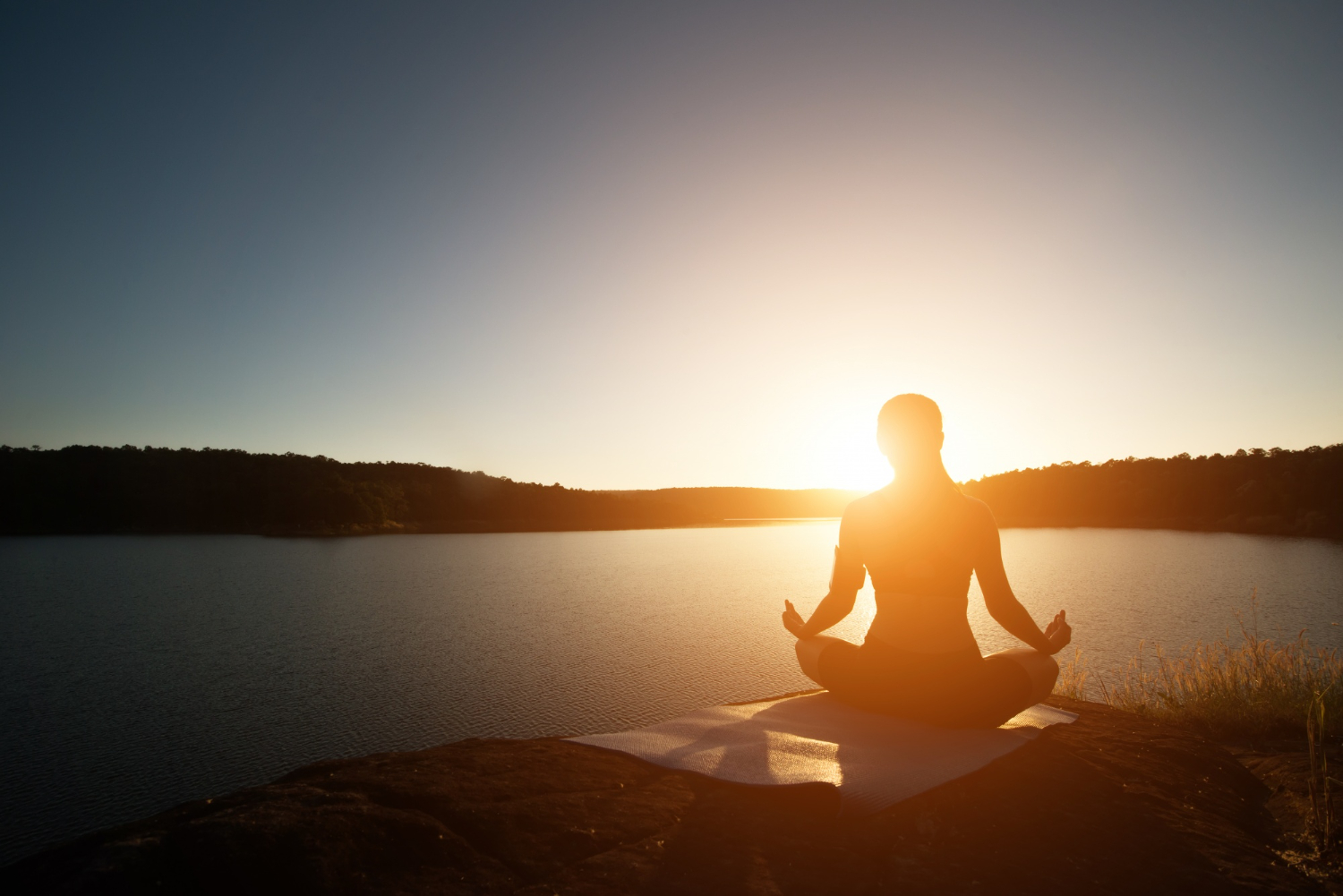Here, we are sharing information on the topic “6 yoga for mind relaxation” For those who work in the corporate world, yoga is a useful technique for stress relief. The best thing about yoga is that you don’t need any prior yoga expertise to practice and lead a stress-free life. It elevates your happy hormones and improves your mood, which ultimately results in ease, calmness in the body, and peace of mind.

6 yoga for mind relaxation
1) Corpse Pose (Savasana)
Savasana, or Corpse Pose, is a calming and stress-relieving pose. It is well known for lowering blood pressure, easing sleeplessness, and reducing migraines. Bringing your body to stillness in corpse posture may seem challenging at first, but it gets easier with repetition.
How to carry out:
-
Place your feet together and your arms at your sides while lying flat on your back.
-
With your palms pointing upward, slowly let your arms and feet to roll open.
-
Allow your body to feel heavy and relaxed.
-
Shut your eyes and hold this posture for ten to fifteen minutes.
2) Forward Fold Pose (Uttanasana)
One of the first stances you learn when you begin practicing yoga is called Uttanasana, or Forward Fold Pose. It reduces tension and soothes the brain. The hamstrings, hips, and calves are all stretched in this pose. It is claimed to assist in easing insomnia.
How to carry out:
1. Start by placing your feet hip-width apart in the mountain pose.
2. With your hips supporting you, slowly bend your torso towards the floor.
3. Reach both hands to the elbows on the other side.
4. Soften your knees and gradually shift your weight forward.
5. Take your time getting back into the initial mountain posture.
3) Bridge Pose with Support (Setu Bandhasana Sarvangasana)
People with persistent lower back pain can find some relief with the supported bridge pose, also known as setu bandhasana sarvangasana. The parasympathetic nervous system is supported by it. supported bridge position enhances posture and strengthens the back. Those who lead sedentary lifestyles would benefit greatly from this pose because it enhances physical flexibility.
How to carry out:
-
Lay flat on your back with your feet hip-width apart and your knees bent.
-
When in this stance, maintain your feet parallel.
-
Lift your hips gradually while pressing your heel down into the soles of your feet.
-
Place a yoga block underneath the base of the spine by sliding it in.
-
To keep the pose, place a yoga block beneath your sacrum.
-
Maintain your arms down on the ground, palms up.
-
Take out the block and softly lower your hips if your back hurts.
4) Sphinx Pose (SalambaBhujangasana)
Salamba Bhujangasana, also known as Sphinx Pose, is an excellent workout for beginners and relieves stress. It includes the muscles of the lower back and shoulders. Abdomen, shoulders, and chest are all stretched in the sphinx stance.
How to carry out:
-
Lie down on your stomach flat.
-
Place your forearms flat on the floor, parallel to one another, and with your elbows underneath your shoulders.
-
Raise your head and chest gradually off the ground.
-
Keep your chin tucked in and face ahead.
-
Hold this pose for eight to ten breaths, then come back to the starting posture.
5) Lizard Pose (UtthanPristhasana)
Utthan Prthasana, also known as Lizard Pose, relieves back discomfort. It improves your flexibility and balance by strengthening your hamstrings and opening up your hips. Lizard stance is a great way to revitalize your body, lower stress levels, and sharpen your mind. The muscles in the shoulders and chest are also opened up.
How to carry out:
-
Start in the dog stance with your head down.
-
Place your right foot parallel to your fingers and outside of your right hand, reaching the top of the mat.
-
Lower your left leg to the ground.
-
Spread your palms wide and lower your elbows so that your forearms are flat on the ground.
-
Hold this posture for five breaths.
-
Gently go back to the downward-facing dog position and do the same with your left leg.
6) Wide-Legged Forward Bend Pose (PrasaritaPadottanasana)
Prasarita Padottanasana, also known as Wide-Legged Forward Bend Pose, strengthens and lengthens your legs and feet. This stimulating inversion position helps to reduce stress by increasing blood flow to the brain. It stretches the hamstrings and fortifies the abdominal muscles.
How to carry out:
1. Maintain a straight posture while spacing your feet 3–4 feet apart.
2. Turn your toes inward a little bit.
3. Bend at the hips and extend your head toward the ground.
4. Maintain your hands below your shoulders.
5. Hold this posture for a short while before easing back into your starting standing position.

Frequently asked questions
(6 yoga for mind relaxation)
Which type of yoga relaxes the mind?
Pose of a child (balasana)
Answer: The classic relaxation pose, child’s pose, eases the tension in your shoulders and back while promoting mental clarity. How to put it into effect: Start by sitting back on your heels while kneeling on your yoga mat. With your arms out in front of you, palms down, lower your chest between your knees.
Which yoga practices reduce mental stress?
Answer: Child’s pose is one of the more soothing poses because it involves folding forward. They let you block out the outside world and experience serenity and calm. For three or four full, deep breaths, remain in a forward fold and let your body and mind unwind.
Which pranayama is for a calm mind?
Answer: breathing with the nose to the mouth
Shut your eyes and begin inhaling deeply several times to help you focus. After taking a slow, deep breath in via your nose, hold it for a little moment, and then release it through your lips. Aggression or tension can arise in people due to a variety of factors, including temperature.
What is the best exercise for stress?
Answer: Walking, stair climbing, running, dancing, biking, yoga, tai chi, gardening, weightlifting, and swimming are a few examples. And never forget that getting active doesn’t require joining a gym. Try body-weight workouts, go for a stroll with the dog, or practice yoga at home with a video.
Conclusion
(6 yoga for mind relaxation)
To sum up, a comprehensive approach to mental health can be achieved by practicing the six yoga practices for mind relaxation. People can develop a quiet and serene state of mind by engaging in deep breathing exercises like Pranayama, physical postures like Corpse Pose and Child’s Pose, and meditation techniques like Mindfulness Meditation and Yoga Nidra. These methods encourage calmness, lessen tension, and improve mental clarity. Frequent use of these yoga techniques not only enhances mental well-being but also develops a stronger bond between the body, mind, and spirit, enabling people to live more harmoniously and in balance.
So, this is how the topic “6 yoga for mind relaxation” has been addressed.
- For more information related to these topics, click here.
- You may also visit our Instagram page by clicking here.
- You may also visit our YouTube channel by clicking here






